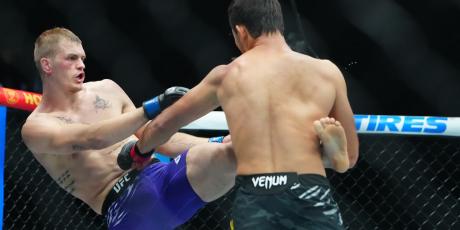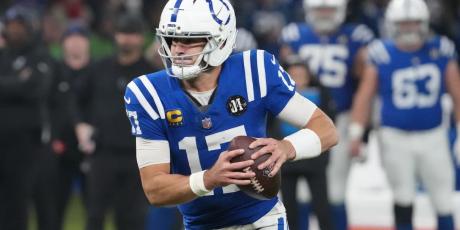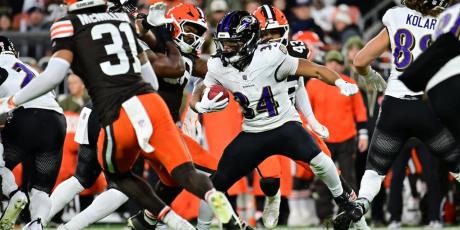2023 March Madness Bracket Strategy

A lot of people strive for perfection with their NCAA bracket picks. Every March, some unexpected teams make runs in the NCAA tournament, and bracket pool players often hope to achieve fame and fortune by predicting all those improbable outcomes.
March Madness is one of the best times of the year. Brackets, bets, buzzer-beaters, and so much more. Last year’s column featured both Gonzaga and Houston as potential winners, and both teams made the final four. This year I’ll review basic bracket strategy and dive into the makeup of former champions from a statistical perspective and advanced strategies for picking a winner.
Brackets are awesome, but betting on the games can make the experience even better. I have already released some bets for the first-round games. If you want access to all of our bets, articles, and subscriber discord, you can sign up for as low as $15! Find out how!
March Madness Strategy
Pick All the 1-Seeds Over 16-Seeds
No. 1 seeds are 147-1 in the first round of the NCAA tournament—Virginia was the only loss as a No. 1 seed (2018 against UMBC). Ignore that outlier and pick all the No. 1 seeds to win their first game.
Use Betting Spreads to Make Picks & Choose “Upsets”
Plain and simple, the betting market is much more efficient than bracket seeding. For example, in 2019, Wisconsin (5) vs. Oregon (12) was a No. 5 seed vs. a No. 12 matchup, but Wisconsin was only a one-point favorite. If we compare this to another No. 5 seed vs. No. 12 seed matchup between Auburn and New Mexico State, Auburn was a 7.5-point favorite. If you want to pick a No. 12 seed to win, you are much better off taking Oregon than New Mexico State. A normal person filling out a bracket sees two No. 12 vs. No. 5 matchups. Looking at the spread tells a different story, though, as Wisconsin and Oregon are essentially 50/50 to win. Oregon won by nearly 20 points while Auburn escaped with a narrow victory, but the point remains true. The same thought process should be applied to every game you pick, especially between No. 8 vs. No. 9, No. 7 vs. No. 10, and No. 6 vs. No. 11 seeded matchups where most bracket entries will likely choose randomly. Early betting lines are out now, and some similar lower-seeded teams are already the favorites.
Find all of the betting lines across sportsbooks here.
Choosing a Winner for your Bracket
Even if you pick nearly everything right in the first few rounds, you will still likely need to pick the winner in order to take home the money from your pool. Leveraging historical data from KenPom.com to analyze past winners can help guide us in what to look for. This isn’t an end-all-be-all but can help us identify the profile of which teams traditionally take home the hardware.
Before we dive in, below are the key metrics to understand:
• Adjusted Efficiency Margin: How efficient a team is on offense and defense, adjusted for how good their opponents were.
• Adjusted Offensive Efficiency: How efficient a team is on offense, adjusted for how good their opponents were.
• Adjusted Defensive Efficiency: How efficient a team is on defense, adjusted for how good their opponents were.
Balance is Key
17 of the past 20 winners ranked in the top six in adjusted efficiency margin heading into the tournament.
For all the notoriety of upsets and “madness” in the tournament, winners are almost always well-balanced teams heading into the tournament.
This year the top-six teams in adjusted efficiency margin are:
- Houston
- UCLA
- Alabama
- Connecticut
- Purdue
- Tennessee
Offense Wins Championships
19 of the past 20 winners have ranked inside the top 21 in adjusted offensive efficiency.
Neither Tennessee (49th) nor UCLA (25th) qualifies here as they fall below the threshold of top-21 in adjusted offensive efficiency. That being said, UCLA is close enough that I’m willing to make an exception, given how good they are defensively and subjectively are balanced enough to make a deep run. However, they are dealing with some injuries that could impact them.
Getting Defensive
19-of-20 teams to win the championship had a defense that finished 37th or better in adjusted efficiency margin.
The winner with the worst adjusted defensive efficiency was Baylor in 2021 (44th), while the average winner’s defense ranked 17.6, and the median is 13th. With that being said, there is a massive asterisk next to Baylor, who dealt with Covid issues for a chunk of their 2021 season. They had a ton of talent and were capable of playing amazing defense but had a stretch where key players played poorly. They were good to go by the tournament and played defense at a top-10 level.
All of the 6 teams listed in our initial list have top-44 defenses, including Alabama (3rd), UCLA (1st), and Tennessee (3rd), boasting top-3 defenses in the country.
Other Contenders
If we want to look outside the top-6 in overall efficiency, there are a few intriguing teams who are close to meeting both the offensive (top-21) and defensive (top-37) thresholds.
- Texas: They are 7th in overall adjusted efficiency margin and a team that I truly believe to be a contender. They meet both the offensive and defensive thresholds at 18th in adjusted offensive efficiency and 11th in adjusted defense.
- Arizona: The Wildcats also meet both the offensive (4th in adjusted offensive efficiency) and defensive (41st in adjusted defensive efficiency) thresholds that we have seen from 95% of winners the past 20 years. Stud center Oumar Ballo is reportedly dealing with a broken hand but will likely play through it. When healthy, Arizona has an electric offense capable of carrying them against any defense.
- Kansas: They are right outside the minimum offensive threshold at 27th in adjusted offensive efficiency while boasting the 7th-best adjusted defense in the country. They are a very popular pick to make a run in the tournament, and for good reason. They have a great resume, strong upperclassmen, and an exciting freshman in Gradey Dick.
- Marquette: They are 12th overall in adjusted efficiency martin overall but are 8th offensively and 47th defensively. They would be a slight outlier if they were to make a run, but nothing that would be too surprising if it were to happen, given how strong their offense is.
- Creighton: They meet the defensive qualification of a top-44 defense (15th) but fall just outside the top-21 offenses, ranking 26th. The Bluejays also have big wins on their resume, including a victory over Connecticut (4th in overall efficiency).
- Indiana: The Hoosiers qualify defensively (43rd) but miss the mark offensively but 7 spots (28th offensively). Indiana also ranks 34th in 3-point percentage and 35th in effective field goal rate, making them a dangerous tournament team with some positive variance.
To summarize all of this, I would recommend picking these 12 teams to not only go far in your bracket but make up the majority, if not all, of your final four and championship game!



















